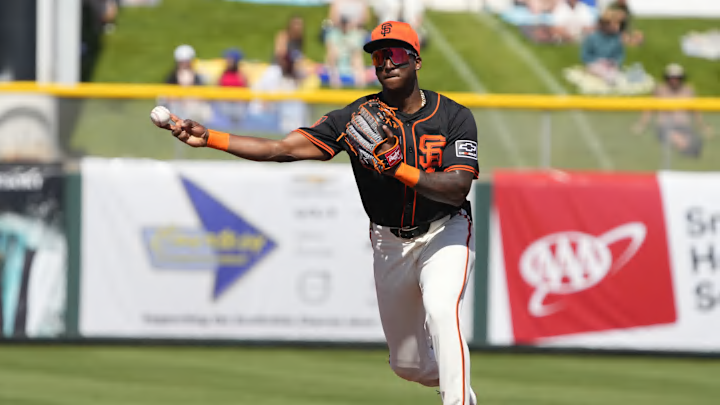Everything SF Giants fans need to know about the Triple-A Sacramento River Cats
Hitters (continued)
Chase Pinder
Pinder is the younger brother of Chad Pinder, who is a seven-year MLB veteran who played for the Oakland Athletics. Pinder had been a productive player throughout his career but lacked a standout and seemed to profile as a potential fourth outfielder at the next level capable of playing all three outfield positions. He has displayed a clear preference to hit against lefty pitchers so a path for him could be as a platoon bat.
Heliot Ramos (#19 prospect)
Ramos has been a prospect for far too long it seems. His power Is still a plus but his propensity to chase caps out his offensive potential. He's done a better job of getting the ball in the air last season and looks to improve his contact ability further. He's slowed down quite a bit over the years and is now only a fit in the corners defensively. He still has a strong arm, though, which should help him have value in the right field.
Jakson Reetz
Reetz to a minor-league contract last June and has spent his entire year in Triple-A. His bat will be fringy at the very best but he is a reliable backstop with good rapport towards the pitching staff. He's dabbled with playing in the corner outfield ever since being acquired by the Giants and was a surprisingly solid defender at the position. He is in a bit of a roster crunch though.
Blake Sabol
Last year's post-Rule 5 acquisition gets demoted after spending the 2023 season in the big leagues. Sabol held his own for a prospect who barely played above Double-A but needed more development. He displayed a solid feel for the zone, contact ability, and some power. His ultimate power ceiling might be more on fringy to average, however. His defense behind the dish still needs plenty of work to be passable as he needs to improve every facet of it. He looked solid in left field, though, so that is a decent fallback option.
Casey Schmitt
It was an interesting year for Schmitt as he started his rookie season hot but cooled down when pitchers finally figured out his tendencies. The big league competition exploited his over-aggressiveness at the plate, frequently chasing pitches out of the zone that limited his contact quality. He still flashed solid pop but his streakiness hampered his production. He's played all over the infield instead of focusing on his best position which is third base. He's still flashed Gold Glove potential but there were also the occasional unusual errors that he would commit.
David Villar
Villar struggled mightily in the big leagues last season where he was relegated to the Minors twice and his role getting smaller as time passed. He was still posting solid offensive numbers last season with Sacramento but far from the offensive boom that he had a couple of seasons ago. He patrolled both corner infield positions last year but now projects to play at first with Casey Schmitt manning the hot corner.
Donovan Walton
At least at the big-league level, Walton's tenure in San Francisco has been mired by injuries and poor performances. As a minor leaguer, he has been decent with a solid offensive line but with minimal pop to his swing. He can play a variety of positions but mainly focused in the middle infield last season. He might not be an everyday big leaguer but he should be a solid organizational piece.
Brett Wisely
Wisely bounced around a couple of times between Sacramento and San Francisco but spent the final two months of the season in the state capital. He's had a solid 2023 offensively where his understanding of the strike zone stands out. He has a sound swing from the left side and is a solid defender at second base. The only issue that he has is that he lacks the power to become a standout player but is a reliable utility guy.
